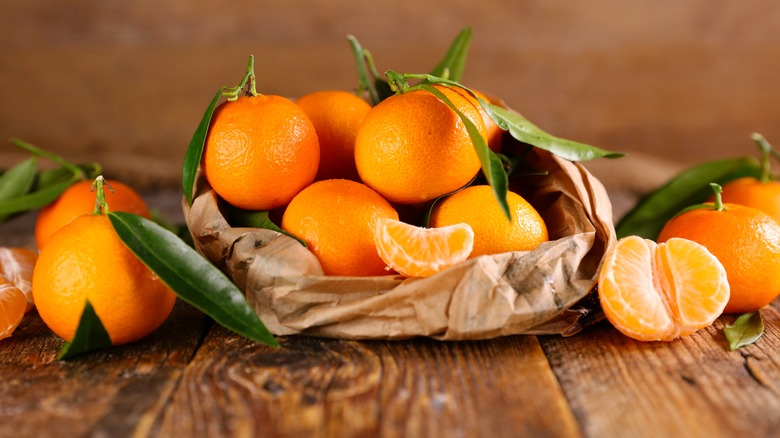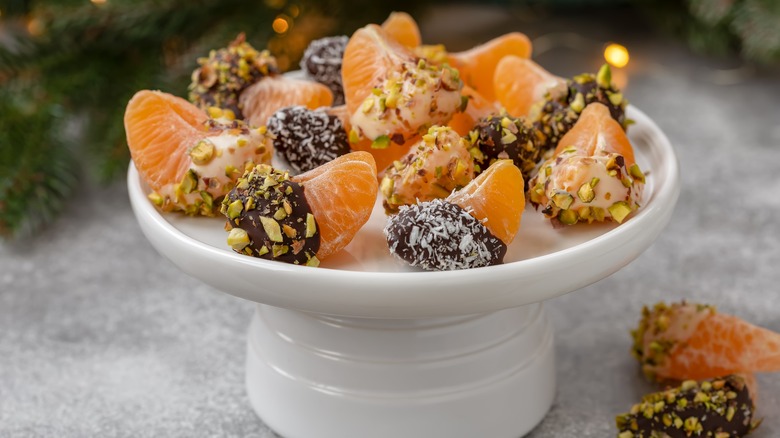What To Look For When Buying Clementines
For many, clementines are the taste of Noel. Typically seedless, easy to peel, and sold in grocery stores by the box, these bright orange orbs bring bite-sized delight to the colder months. Because when the weather outside is frightful, it's a bit like eating a miniature sun. And if you're lucky, you might find one in the toe of your Christmas stocking.
Yet where did this fruit come from? The origin of the clementine is a little uncertain and might even have been a happy accident. According to Arab America, this dainty and delicious mandarin orange is said to have first appeared in the village of Misserghin, Algeria, in a 19th-century orphanage run by monks. There, a French missionary brother named Clémont Rodier, took care of the citrus trees in the orchard. According to National Catholic Register, some say that the first tree to produce clementines was a spontaneous and fortuitous hybrid that Clémont discovered growing among thorns. Others claim that he intentionally cultivated clementines by observing the cross-pollination activities of bees, calling the resulting fruits "mandarinettes." Another version of the story states that the orphans adored the petite fruits and decided to name them after Clémont (via Geneastar). What we do know for sure is that clementines are a hybrid of a sweet orange and a willow-leaf mandarin orange.
So now that you're up to speed on their history, how can you ensure you get the ripest, juiciest, most oh-my-darling clementines on the shelves?
Secret tricks for choosing the best clementines
The Spruce Eats suggests that when hunting down tasty clementines, you should put your various senses to work. For instance, keep your eyes out for the brightest fruits with a consistent color and no blemishes or bruises. Next, give them a sniff — are they nicely aromatic? If so, then you might be close to clementine Shangri-La. But not so fast, as it's time for the squeeze test. Make sure that the fruit feels soft, but not too soft, as well as bouncy with a bit of give. If it feels too light for its size, it might lack juice.
Even if clementines hit the stores early, hold your horses and wait until December, as that's when they're at their best (via Kitchn). And choose the smaller ones with glossy rinds, as those have the most flavor punch. Finally, don't forget to turn the box upside down to check for any rogue mold.
And while clementines are delicious to simply peel and nibble, there are lots of other ways to enjoy them. For instance, as Have a Plant points out, they're ideal for throwing into a quinoa salad, tossing on top of oatmeal, or jazzing up fruit kebabs. Plus, the Hale Groves blog recommends using their zest in baking or even making clementine marmalade. Or why not booze things up with a spiced clementine sour cocktail? Mandarins have a naughty side, after all.

